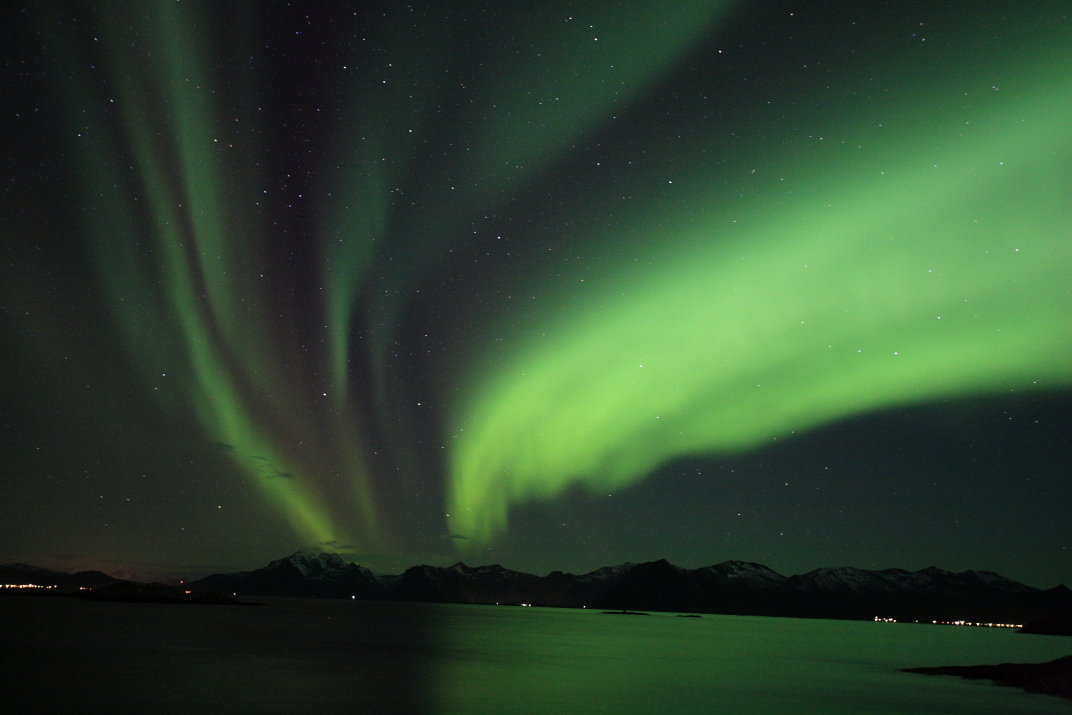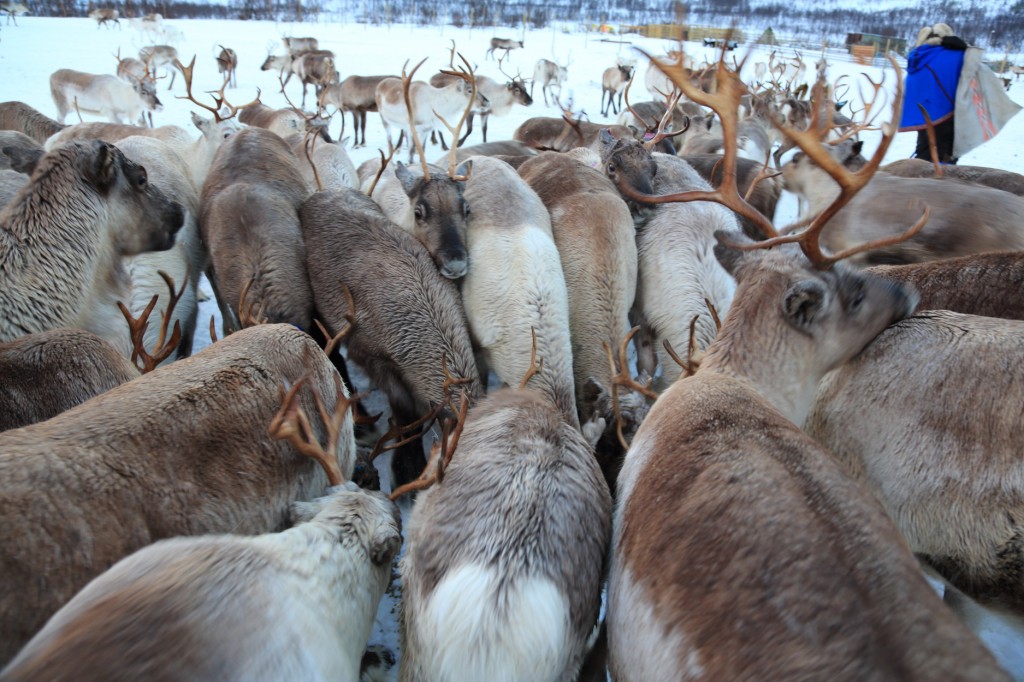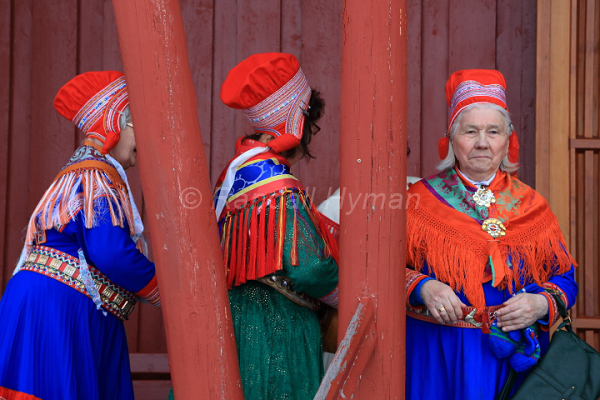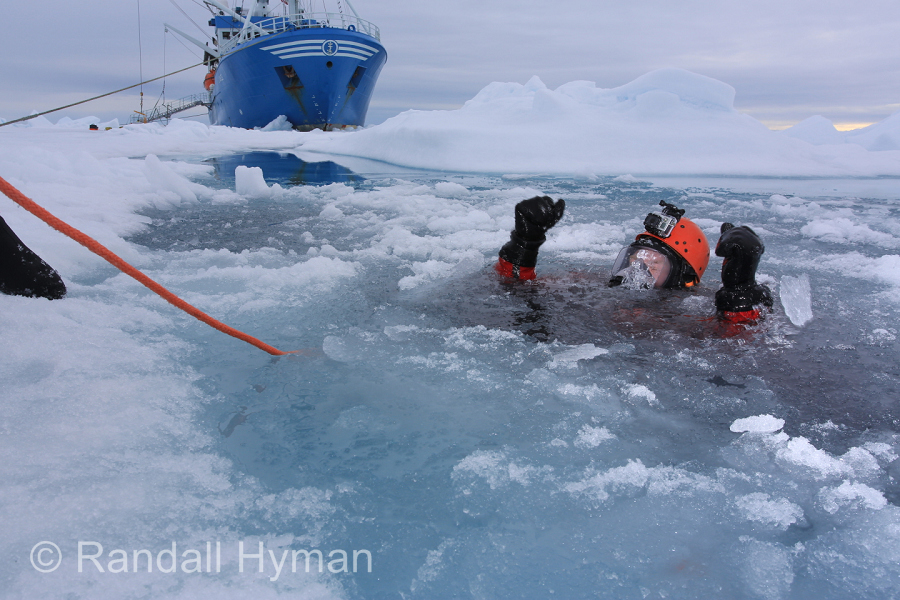Posted today in the online version of The Atlantic magazine, here is an inside, first-person account of the fascinating research being pursued by scientists in a remote fjord in the dead of the Arctic winter.
CLICK PHOTO TO VIEW ARTICLE:

Posted today in the online version of The Atlantic magazine, here is an inside, first-person account of the fascinating research being pursued by scientists in a remote fjord in the dead of the Arctic winter.
CLICK PHOTO TO VIEW ARTICLE:
At 78° north, some 800 miles from the North Pole, it doesn’t take long to shuck the winter blues. Okay, there’s no sun, but instead of warm beaches, there’s bathing in moonlight, starlight and occasional Northern Lights while dog sledding and snowmobiling in the mountains and then hiking between pubs and restaurants in town, sampling regional food and drink. To learn more, see my article in this week’s online National Geographic.
CLICK PHOTO TO SEE ARTICLE:
Accompanying a research team at 78° north aboard the RV Helmer Hanssen off the Svalbard coast, I have been witnessing discoveries about the Arctic Ocean’s long winter night that herald a sea change in arctic marine biology. Using sensitive light measuring instruments, an ROV (remotely-operated underwater vehicle), traditional trawling techniques and a robotic kayak, scientists continue to be amazed by how active life is during this cold, dark season that was formerly assumed to be a time of stasis. More about that in an upcoming magazine article.
CLICK PHOTO TO VIEW PHOTO GALLERY:
As I prepare to join a research team aboard a ship off the Svalbard archipelago later this month, my alma mater, Indiana University, recently published this short piece about my 2015 Alicia Patterson Foundation honors (America’s oldest journalism fellowship) in their alumni magazine. Earlier this month, I served on the Foundation’s five-judge panel in Washington choosing 2016’s six new fellows. While in town, I had the honor and pleasure of presenting my lecture show on Arctic climate change to the diplomatic and military staff of the Norwegian Embassy. More to come in late January on the final leg of my fellowship.
CLICK PHOTO TO ENLARGE:
What does the receding Arctic ice pack have to do with global climate health and why are polar bears eating 44-pound omelettes? Connect the dots in this narrative about crumbling ecosystems and vanishing polar ice as you travel aboard a research ship to go beneath the frozen Arctic Ocean and then sail aboard a Norwegian icebreaker to get up- close-and-personal with a polar bear.
CLICK PHOTO TO READ ARTICLE:
Methane and methane hydrates may be the key to Norway’s next big energy boom. With oil and coal on the decline, Prime Minister Erna Solberg announced earlier this year that her country would be transitioning away from oil toward gas in the future. At the CAGE institute (Center for Arctic Gas Hydrate, Environment and Climate), scientists are exploring some of Norway’s largest reservoirs off Svalbard where a slight rise in temperature could thaw and unleash a methane hydrate monster. Trapped semi-frozen beneath seafloors worldwide, methane hydrate is a sleeping giant that can expand 160 times its icy volume when changed to gas– exciting news for oil companies, but terrifying for climate scientists. Global reserves of hydrate-bound methane have been estimated as high as 10,000 gigatonnes—twice the world’s total petroleum, natural gas and coal reserves combined. This article about a recent cruise with a CAGE team explores the past, present and future of methane research.
CLICK PHOTO TO READ ARTICLE ABOUT SCIENCE CRUISE:
Sailing aboard a research ship off the west coast of Spitsbergen at 79° North last month, I marveled at our main cargo on the aft deck: two golf-cart-sized crafts that looked like NASA probes bound for planetary exploration. These, however, were headed for inner space, not outer space, designed to set down on Earth’s continental shelf in the Arctic Ocean 500 miles north of mainland Norway. Like the New Horizons spacecraft streaking past Pluto two weeks later, the seafloor landers would be monitoring planetary chemistry, particularly methane, to glean a better understanding of how that substance, 25 times more potent than carbon dioxide as a greenhouse gas, might affect Earth’s future climate. At nearly half a million dollars each, the new landers were commissioned by Norway’s CAGE institute (Centre for Arctic Gas Hydrate, Environment and Climate) for more than a mere fly-by. Their year-long missions: track the fate of methane bubbling from the seafloor and help determine whether it poses a serious climate-change threat.
CLICK ON PHOTO TO VIEW VIDEO:
Hot on the heels of my piece in Scandinavian Review about the joyful Sami Easter Festival comes a more serious look at the difficult future that Sami reindeer herders face in the wake of climate change. This is the first of four articles I am producing in the Norwegian Arctic during my one-year fellowship with the Alicia Patterson Foundation.
CLICK PHOTO TO READ ARTICLE:

Reindeer stranded in lowlands by early snows feast on feed pellets in icy field outside Tromsø, Norway. © Randall Hyman
As mentioned in an earlier post, I came upon one of the most unknown and colorful Easter festivals in all of Scandinavia while covering the impact of climate change on Sami reindeer herders last April. Read about it in this summer’s issue of Scandivanian Review.
CLICK PHOTO TO VIEW ARTICLE:
With students graduating across Norway this month, the last day of school can be bittersweet, especially when it means the last day of a school’s existence. This coming June 18th, Andrine Klausen will finish middle school on the small island of Ingøya off the north coast of Norway, and the graduation ceremony will be special for two reasons: Andrine is the last student left on the island and the school will be closing its doors forever.
CLICK PHOTO FOR ARTICLE ON LAST DAYS OF INGØYA SCHOOL:

Andrine sets off to fish cod with her teacher and mother after school in Ingøya, Norway. ©Randall Hyman
After the Sami Easter Festival in Finnmark, I traveled aboard the Norwegian Coast Guard’s crown jewel, the KV Svalbard icebreaker for three weeks. Our primary mission: chisel our way north of the Svalbard archipelago for 180 nautical miles to 83° North latitude, leading the Norwegian Polar Institute’s research ship, RV Lance, and leaving it locked in a frozen berth from which scientists are tracking the natural drift pattern of the polar ice pack as well as monitoring marine life and chemistry beneath the ice.
It took most of a week to reach our destination and several more days to weave our way back out of the frozen maze, breaking through ice as thick as two meters when natural channels shut closed due to winds and tides. April is usually the month of maximum sea ice coverage in the circumpolar north, but the winter pack ice barely extended as far south as where I found it in late summer during “ice minimum” in August 2013 aboard the RV Lance, just north of Svalbard (see Thin ice: Uncharted waters of climate change).
After reaching open waters again, we pushed our way into some of the archipelago’s most uncharted recesses, docking amid fjord ice each night to serve as a stable helicopter platform for polar bear scientists. On the final morning, a polar bear ambled across the ice past our ship and laid down beside a seal hole, patiently awaiting dinner. After scientists darted him with a sedative, they worked quickly taking blood and fat samples, measuring its girth and length, and pulling the the tiny vestigial tooth behind its canine to count “rings” in the tooth and determine age.
Throughout our journey, the crew of sixty men and women– most on a mandatory year of military service– practiced maritime skills and onboard emergency response, from firefighting to first aid. Those on their first tour above 80° North had to prostrate themselves on a block of ice before King Neptune to be doused by buckets of icy seawater.
The biggest surprise of the trip was visiting a young couple living off the land in an old trapper’s hut tucked deep in a remote fjord. After a bone-rattling hour of snowmobiling across fjord ice to reach their hut, I came up the hill to discover that the woman, there in the middle of nowhere, was a friend, Ragnhild Røsseland– someone I had met in Svalbard two years earlier when she worked for the archipelago’s park service as a biologist. (see Sysselmannen: Svalbard guardians)
CLICK PHOTO BELOW TO VIEW EXPEDITION VIDEO MONTAGE:
As part of the first leg of my four-part, year-long Alicia Patterson Foundation fellowship project, I am focusing on climate change effects on the Sami reindeer economy. The first week of my 5-week journey was spent at the humble village of Kautokeino (cow-too-cane-o) in Finnmark County of Norway’s far north.
The town boasts one hotel, two churches, thousands of colorful folk costumes and one of the most improbable Easter festivals in all of Scandinavia. After slumbering through the Arctic winter’s constant darkness, Kautokeino comes alive each spring amid the vast whiteness of Scandinavia’s Lappland region for a magical, four-day reawakening called the Sami Easter Festival. Townspeople emerge from snow-laden homes in ornate finery of blue, gold, red and silver to attend three nights of elaborate folk and pop concerts, reindeer and snowmobile races, and to celebrate Easter.
CLICK PHOTO BELOW FOR A FESTIVAL TOUR:

Women dress in traditional Sami outfits at Easter morning service in Kautokeino, Norway. © Randall Hyman
Arctic climate change and vanishing sea ice is producing strange and unexpected consequences. Hungry polar bears, denied sea ice and a platform for hunting seals, are turning to eating omelets in the traditional breeding grounds of ground-nesting seabirds. A single bear can raid fifty nests and consume 200 eggs in an hour and a half. As bears adapt to this strange new world, scientists are proving resilient, too, as described in this article I published yesterday in Science Magazine‘s online news feed service ScienceNOW:
CLICK PHOTO TO READ ARTICLE:
The Arctic Frontiers policy and science conference in northern Norway this January was marked by fiery debate as hundreds of participants reacted to the landmark announcement on the first day that the government was inviting 43 companies to bid on new oil leases in the Barents Sea. It was the first such offering in 20 years, and it contradicted advice from Norway’s own scientists that oil activity should remain far south of the fluctuating polar sea-ice edge.
The new lease parcels overlap what some consider the hazardous “slush line,” where ice and storm make extraction technologically and environmentally risky. This zone is the cradle of life in the Arctic Ocean, where the ice edge recedes each spring under 24-hour sunlight, generating vast algal blooms that feed the entire food chain, from fish to seals to polar bears. Opponents of the new lease blocks say that an oil spill in this remote and gale-prone region would be disastrous and difficult to contain.

Norwegian Polar Institute scientist investigates marine life at the Arctic Ocean ice edge, 82º North latitude.
© Randall Hyman
Throughout the conference, prime ministers, oil execs, environmentalists and scientists debated management of Arctic resources in light of a startling energy study published by Nature in early January. The study, based on careful modelling of the Earth’s carbon budget and the United Nations’ call to cap Industrial Age global temperature rise at 2°C (3.6°F), suggests that 4/5 of the world’s coal reserves, 1/3 of its oil and 1/2 of its gas must remain forever untapped.
The study specifically cites Arctic oil as essentially off limits, and Norwegian Prime Minister Erna Solberg declared at the conference that her country was entering a new “gas age” and would be slowly leaving oil behind. Environmentalists and policy wonks warned of “stranded assets” — i.e., extraordinarily expensive, taxpayer-subsidized oil and gas rigs left abandoned in the Arctic Ocean in a post-oil economy three decades from now.

Tanker ship docks at liquified natural gas plant at the gateway to the Barents Sea in Hammerfest , Norway.
© Randall Hyman
By any measure, these are precarious times in the Arctic. Oil prices are tumbling and many Barents Sea exploration sites are yielding mediocre results. While the petroleum industry desperately looks to slash costs, environmentalists see cheap, $50/barrel oil as a blessing. For the short term, with a break-even point of $100/barrel, Arctic oil is just too expensive to drill.
Nonetheless, oil companies and some Arctic Council nations are betting on oil for the long term. Since planting its flag on the seabed at the North Pole, Russia has been reopening mothballed Cold War defense sites across its vast Arctic coastline. In a counter move, Denmark recently laid claim to all gas and oil resources at the Pole by extending Greenland’s subsea mineral rights far north of its icy shores. For its part, the United States owns only one active heavy icebreaker to deal with maritime emergencies in the Arctic compared with six nuclear icebreakers operated by Russia.
With the US assuming chairmanship of the Arctic Council from Canada in April, President Obama recently appointed Admiral Bob Papp, former head of the Coast Guard, as special representative to the Arctic. Papp spoke at the conference, calling for caution regarding energy development in the Arctic, in stark contrast to the pro-development leanings of Canada.
Papp’s concerns are worth noting as the US prepares to open the Chukchi and Beaufort Seas to drilling on one side of the Arctic and Norway expands Barents Sea claims on the other side. Oil industry assurances that Arctic operations can be conducted safely ring hollow for environmentalists who remember the 1989 Exxon Valdez spill in Alaska’s Prince William Sound and Royal Dutch Shell’s disastrous drillship wreck near Kodiak Island in 2012, which, like the BP oil disaster, was the result of a chain of reckless cost-cutting decisions.
Meanwhile, the ice continues to melt, with Arctic temps rising twice as fast as the rest of the globe. While experts estimate that 13% of the world’s undiscovered oil and 30% of its untapped natural gas lie beneath the Arctic Ocean, reaching them depends on how quickly the Arctic melts and, conversely, how effectively the world curbs greenhouse gas emissions. Scientists predict an ice-free North Pole by 2030.
After attending the Arctic Frontiers conference in January, I joined Sami herdsmen outside the town of Tromsø, Norway as they corralled and separated reindeer trapped along the coast by early snows in autumn. The animals were finally headed by truck to the highlands to join herds that had already migrated to high mountain plateaus.
Lowland, coastal winters are deadly and expensive. Successive layers of ice caused by alternate rain and freeze cycles cover pastures like a steel sheet, making natural foraging impossible. This can lead to starvation. The herdsmen I met outside Tromsø were spending $1500/day feeding specially-formulated food pellets and hay to some 2000 reindeer. For the herdsmen, the sooner their animals made it to higher ground, the better.
Winter temperatures in the highlands are bitterly cold, but that makes snow dry and fluffy, which insulates the tundra pasture so reindeer can easily paw out an existence. Even in the highlands, though, life is tough. White-tailed eagles and wolverines prey upon herds, cutting calf survival to 10% some years. Reindeer do not usually bear twins like sheep, so the loss of a single calf hits hard.
CLICK PHOTO FOR VIDEO INTERVIEW:
Since the early 1980s, climate change has steadily made reindeer ranching even more difficult, bringing rain-freeze cycles to the highlands rather than just the coastal lowlands. This is bad news for reindeer and bad news for traditional Samis, Scandinavia’s only indigenous people. Once heavily dependent upon reindeer, only 3% of northern Norway’s 50,000 Samis now follow this semi-nomadic, rugged outdoor lifestyle.
Mining, power lines, roads and expanding communities are steadily encroaching upon ancestral lands, but Samis are beginning to see one bright spot: cultural tourism. With greater awareness of the threats facing the Sami way of life, foreigners are coming in increasing numbers to experience this unique culture. Several Sami companies offer visitors a range of traditional activities, from half-day reindeer sledding to week-long treks following the annual migration from highlands to lowlands in April.